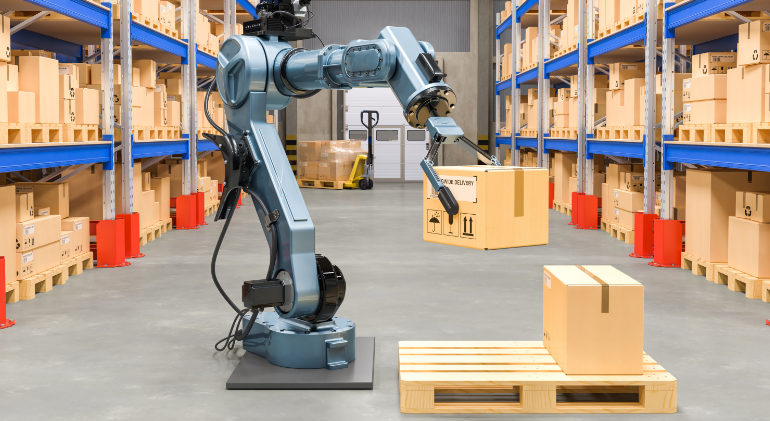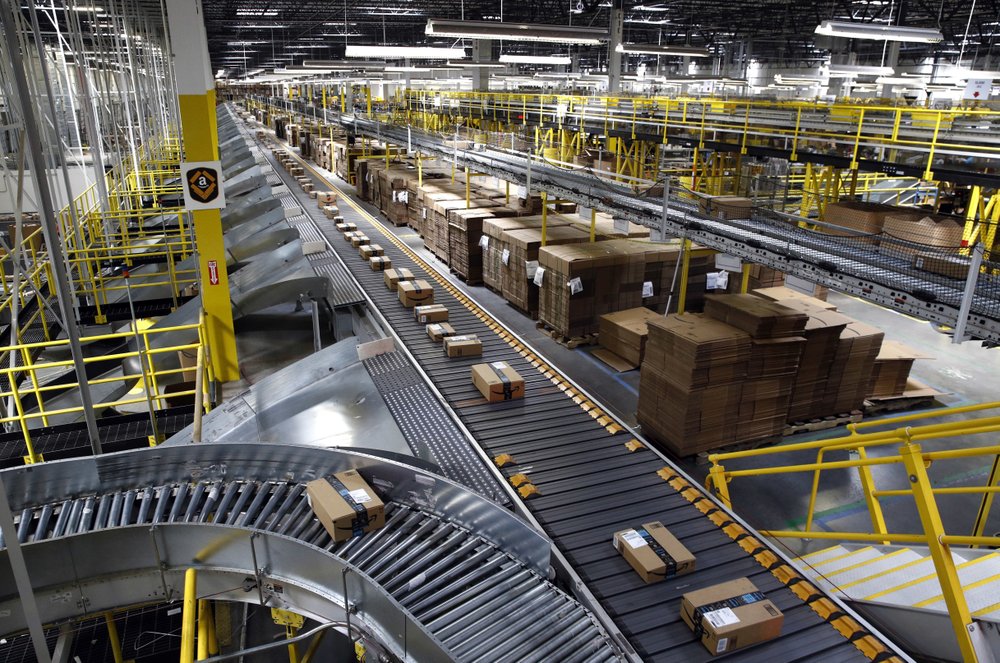
Smart Warehouse is the future of conventional warehousing options. The inclusion of hi-tech solutions has created this dynamic, versatile, and intuitive environment. It is powered by the interdependent functioning of machines and man under one roof.
This helps in combating some of the top problems listed in the DHL Smart Warehousing Whitepaper. According to this study, around 27% of fulfillment problems arise due to less staff turnover. While labor performance and productivity remained at the top of this list with 50%.
The solution has also enhanced the supply chain compliance of numerous eCommerce businesses. In this article, we will talk about what a smart warehouse is and why it’s going to be increasingly important in 2021.
What is the Smart Warehousing Technique?
The smart warehouse approaches warehouse operations like a progression of interlinked functions, resources, and operations. By adopting this technology, around 82% eCommerce and other organizations plan on reducing the operational costs and improving their productivity.
A smart warehousing system is the result of corresponding warehousing technology functioning synergically. These together form a unique technological ecosystem for a warehouse.
Although, it comes with both pros and cons. Automation of all warehouse operations while maintaining the least errors is one of the highlights of this technological ecosystem.

Manual vs. Smart Warehouse
In Manual Warehousing, the operations or all types of functions majorly rely on the workers. Their accurate completion depends on how they plan and implement tasks. This includes carrying, loading, and delivering the products based on their requirements.
On the contrary, in smart warehousing, an automated system manages all these tasks. They also receive orders automatically after the WMS has reviewed that the product is in stock. Following this, the system also generates pickup lists for the robotic carts. These are tasked with procuring the items, keeping them in containers, and delivering the product to the workers.
Furthermore, the above-mentioned DHL report also showcased that automation technology can uplift employee performance by 66%. While using Digital Labor Tools and Platforms will bring a 61% improvement.
5 Advantages of Smart Warehousing
1. Reduced Operational Costs
Yes, you read that right. Having a cutting-edge warehousing system can help you save on your operational costs. This is made possible by the incorporation of hi-tech equipment monitoring. It will provide you with real-time notifications in case of growing downtime risks.
In short, you will be saving on your equipment maintenance and repairs. You can also install smart sensors and lighting fixtures to ensure decreased resource wastage. This can assist you in maintaining the right operating conditions and avoiding unexpected expenses.
2. Improved Workforce Performance
By employing smart solutions for manual tasks, you will not have to worry about hiring more workers. The system will automate all the operations, which will also reduce your labour costs. However, this is not the only aspect of this advantage.
Having technological solutions can actually help your staff improve their output significantly. More than 70% of warehouses have deployed smart tech to fulfill orders effectively. Furthermore, this will also allow them to direct their focus towards other important tasks.
3. Quicker Shipping
In most Manual Warehouse settings, processing eCommerce orders can take a large amount of time and effort. The workers have to navigate through the vast warehouse to find the required product. However, while this is time-consuming, there are high chances of errors in any of the steps.
According to the statistics, the error rates in a normal warehouse range somewhere between 1 to 3%. Now with Smart Warehousing, you can bring these numbers down to 0%! The eCommerce management system will also complete the sorting, procuring, and packing process accurately.
4. Transparent Functioning
It is observed that the reliability of a warehouse increases with the levels of transparency they maintain with their customers. Whether it is about basic factors like temperature conditions to advanced aspects like the product handling process, providing your customers with insight can boost your business.
Furthermore, since the employees cannot be everywhere, another feature of smart warehousing is 24/7 operational visibility. It includes a quick glance into everything from warehouse conditions to ongoing operations. This also comes in handy while seeking a solution in case of problems.
5. Better Use of Space
The last benefit of having a smart warehouse is the improved utilization of the available space. Along with automated pickup and sorting, you have the option of building higher shelves or lean aisles. The system can efficiently manage all tasks without congesting the rack network.
This will allow you to maintain a larger inventory and product range as per your requirements. Moreover, it also lowers your expenses on overhead charges per unit of traded goods. These savings can be used as a product price reduction or higher profits.

5 Trends in Smart Warehousing for 2021
Being from a tech-savvy domain, smart warehousing has been quickly evolving and adapting to newer trends. Here are a few of the upcoming trends or predictions for the industry:
1. Importance in Post-COVID Phase
The advent of the COVID-19 pandemic has influenced industrial functioning to a great extent. Based on a study performed by Peerless Research Group, 34% of participants agree that there has been more than 30% increase in the e-Com domain during the pandemic.
Smart technologies can also reduce the human touch on the products. These also comply with the social distancing and hygiene regulations. Also, changing consumer behaviour and growing awareness of the right protective measures can help a warehouse make its services stand out.
2. Future Expansion & Growth
Due to the growing demand for quick online deliveries, warehouse facilities are required to cater to this requirement. And smart technologies have made this possible. It is being predicted that by 2026 the automation of warehouses will increase by 14%!
The stats were published by LogisticsIQ, a research house, which means its total market worth will increase to €24.8 billion or more. Faster deliveries for online orders will be one of the major contributing factors to this successful growth.
3. Management Technology
While smart warehouses already have a robust network of management technology, the ever-changing tech landscape requires fast adaptation. This means the technology they deploy should cater to their evolving requirements.
You should work on including the following tools in your warehouse set-up to make the most of this opportunity:
- Warehouse Management System
- Automated Picking Tools
- Automated Guided Vehicles
- IoT Implementation
4. Future with Drones
Drones are being expected to become a more significant part of smart warehousing. They will surely bring a substantial change in how warehouses to sort, arrange, acquire, or store products in their unit. Since the industry has not received much attention or transformation in the last decades, this is being viewed as a major change. After a few short years, there will be the inclusion of drones in various management or technical tasks.
5. Wearable Tech Solutions
From facilitating better communication to making product tracking easier, wearable technology is another trendy addition to this domain. This includes having wrist scanners for barcodes, smart glasses, voice-controlling headsets, and more.
Making investments in this section will allow the warehouses to adopt smart technologies efficiently. Another name, with growing popularity, is Augmented Reality. The AR wearables will allow the workers to get real-time product measurements and pickup stats.
Final Verdict
The incorporation of hi-tech solutions has brought a dramatic change to the warehousing industry. While it has facilitated better functioning, it has also helped smart warehouses in aiding eCommerce sellers achieve greater customer satisfaction rates and positive feedback.
Having smart technologies has gradually optimized small and big warehouse processes. This automation has paved the way for quick growth and expansion of the sector at a global level.
An observation is that the warehouses in India quickly adopt these modifications to stay ahead of their times; in a competitive industry. Also, in case your eCommerce operations are fewer, then outsourcing a smart warehouse service is the best option for you.
